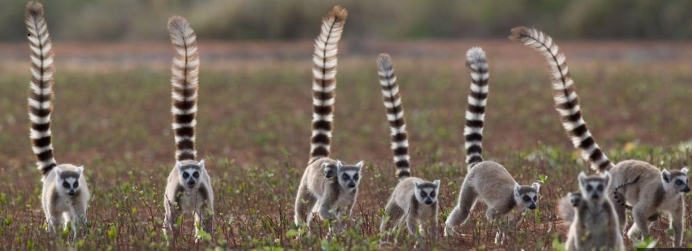In the dense forests of Southeast Asia, a pair of luminous eyes peeks from the shadows. It blinks slowly, its movements cautious and deliberate. At first glance, it appears to be a stuffed toy come to life—with round eyes, tiny hands, and a gentle expression that evokes instant affection. This is the slow loris, one of the most captivating and mysterious animals in the natural world.
Despite its small size and cute appearance, the slow loris harbors secrets that few people know. It is one of the only venomous mammals on Earth. Hidden in its elbow glands is a toxin that, when mixed with saliva and delivered through its bite, can cause allergic reactions or even severe wounds in predators and humans alike. This unique defense mechanism sets the slow loris apart from nearly every other primate on the planet.
Slow lorises are nocturnal, meaning they are active at night. During the day, they curl up in tree hollows or nestle among dense foliage. At night, they move quietly through the trees, using their strong, opposable thumbs and sensitive grip to cling to branches with stealthy precision. They feed on a diet of insects, tree gum, fruits, and small animals—using their keen sense of smell to navigate the dark.
Socially, slow lorises are solitary creatures, though mothers care for their young with extraordinary tenderness. A baby loris will cling to its mother for weeks, riding on her back as she forages. Their bonding is quiet, subtle, and deeply emotional. When threatened, lorises raise their arms above their heads—a seemingly harmless posture that actually prepares them to deliver a venomous bite.
Sadly, the very traits that make slow lorises so endearing have also put them at great risk. Illegal wildlife trafficking and the exotic pet trade have led to thousands being captured, smuggled, and sold. Many die during transport or suffer after having their teeth painfully removed to prevent biting. Viral videos portraying slow lorises as “cute pets” often hide the cruelty behind the scenes. Conservationists are working tirelessly to protect them, emphasizing that these wild creatures belong in forests, not cages.
In their natural habitat, slow lorises play an important role in the ecosystem by controlling insect populations and pollinating certain trees. Their slow, deliberate movements help them avoid detection by predators, but they rely heavily on undisturbed forests to survive. Deforestation, combined with human encroachment, poses one of the greatest threats to their continued existence.
The slow loris reminds us that nature’s gentlest faces often conceal the most complex stories. Behind their big eyes and plush-like bodies lies a world of adaptation, survival, and silent strength. They are living proof that being slow is not a weakness—but a strategy refined over millions of years.
At retroscope.top, where we highlight both cultural and natural heritage, the story of the slow loris offers a bridge between fascination and responsibility. It asks us to look beyond the surface and to protect the wild beauty that remains hidden in the trees.











